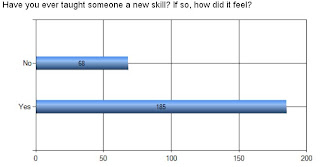New Year, final year of my Masters. Really need to ensure I keep up all the momentum from the last few months, as this will only get hard. I need to create time and space for my project. It must now become its own lifesource.
This month I have enjoyed completing my Life Beyond a Box project, however was slightly disappointed in the first tutorial when others had not done the project, perhaps would have been better in this instance to mix up the groups a bit, so we could discuss everyone's.
My project has progressed in another direction slightly now in that I have also been thinking about games that groups could create from things they find around the hosue that allow them to interact together, the games would obviously teach different crafting skills in the initial creation stages and then just be great fun to play.
My session with the ladies at the Craft Council Research Centre have been very productive and I would like to go there as many times as is possible, its a great resource.
I completed another version of my pro forma as did the others in my group and we have given feedback to each other on these. I feel mine is pretty detailed and robust now. My question currently is:
How can traditional practices and culture be maintained with the use of crafting in contemporary society?
Feedback from the tutorial was very useful although I do feel I was being led to create more of an experience in the community, in parks etc, whereas I feel the kits I want to create will have a similar but smaller effect. But the feedback did lead me to think about a new possible use for my kit. I was thinking when studios have their open days/evenings, there are always a lot of children around with not much to do. It would be great if they (and their parents) could bring in old items to reuse and recycle and the designer makers in the studios give them ideas of what is possible and teach them some basic crafting skills, so that families can participate together to create something new. I am sure the designer makers also have some waste materials the families could utilise.
As a group we have started to discuss the exhibition quite a lot on our facebook group, although we feel rather naughty, as it has been reiterated a number of times that starting the process too early is not recommended as once we are joined with the full timers everything can change! I think we all have very high standards and some great ideas about what we would like to achieve and so it is of course worrying to think a lot of this will be in someone else's hands. I personally have never had an exhibition before and I really want this to be amazing as it will probably be the only time in my life I am involved in something like this.
Whilst thinking about the exhibition I have also come a number of exciting ways of displaying my research process and artefact iteration. Firstly, video, I would like to use video ethnography in my research and have a film up in my exhibition. I would also like to use photography and personal items from those that have been involved in my project to make a giant charm bracelet or patchwork quilt.
I really hope the ethnography will give me key insights which I can then use to evolve my artefacts.


























































